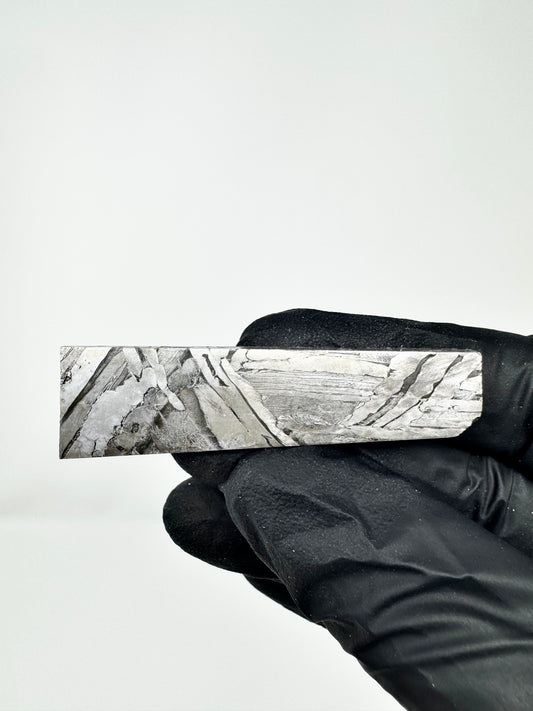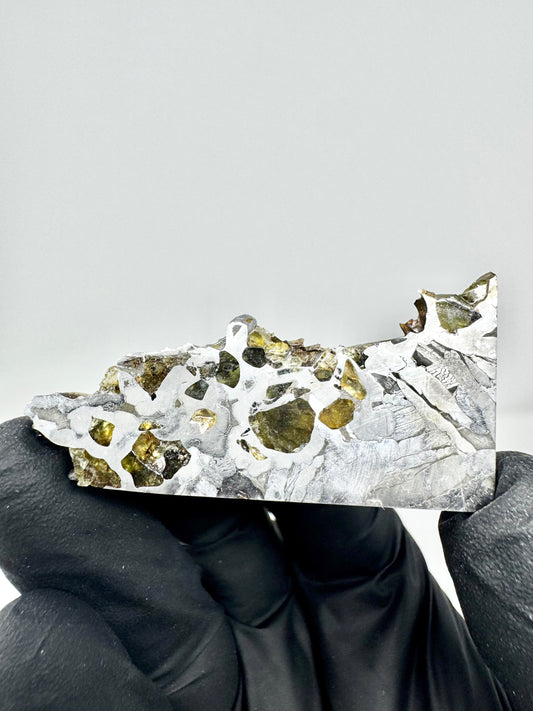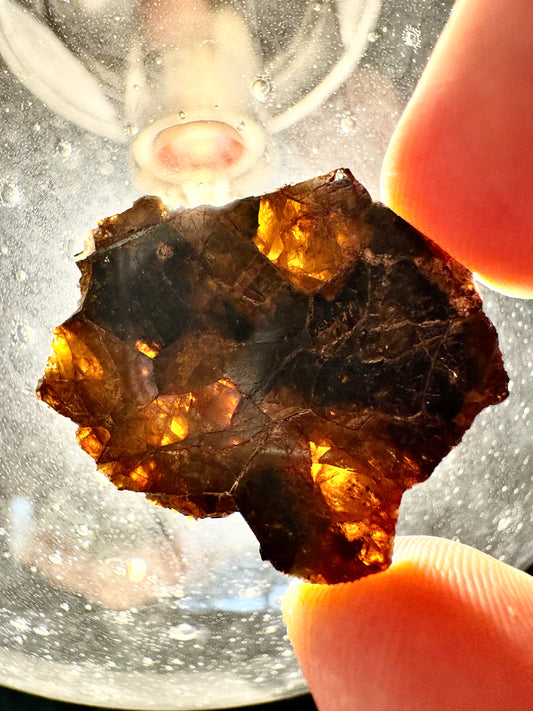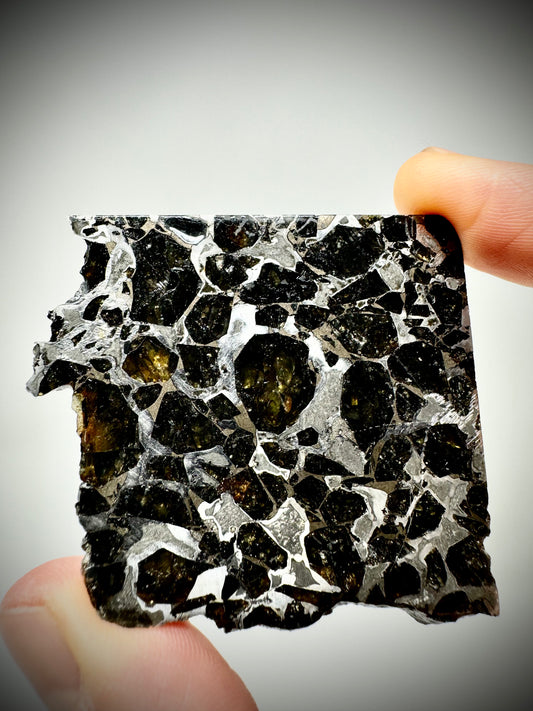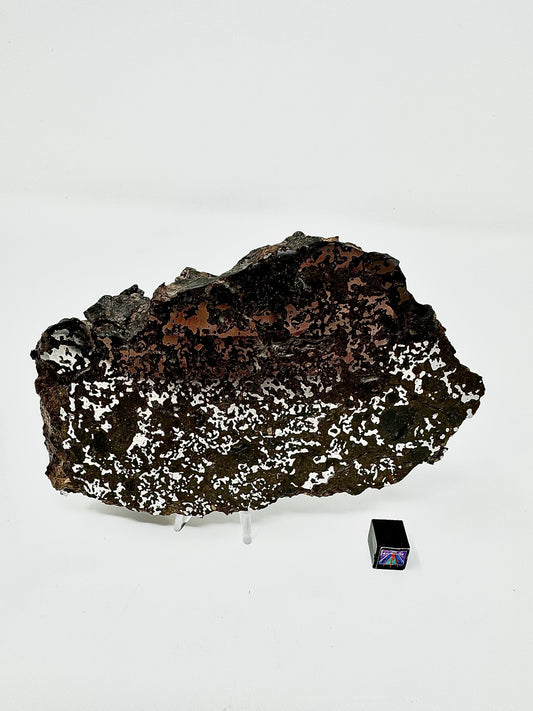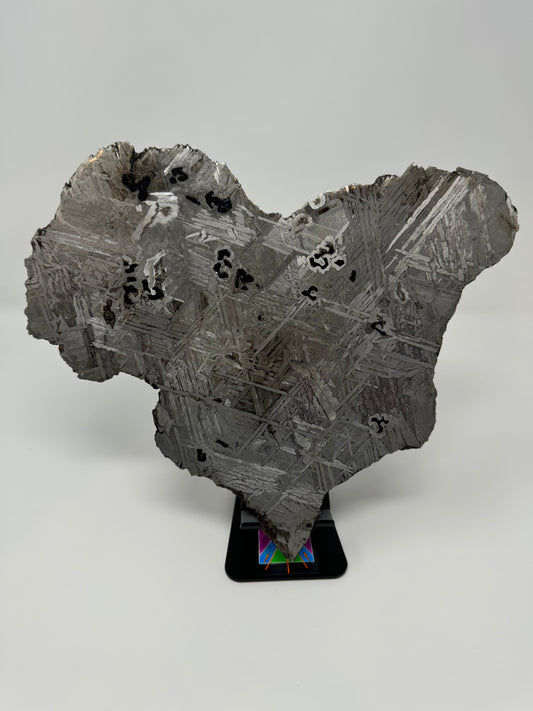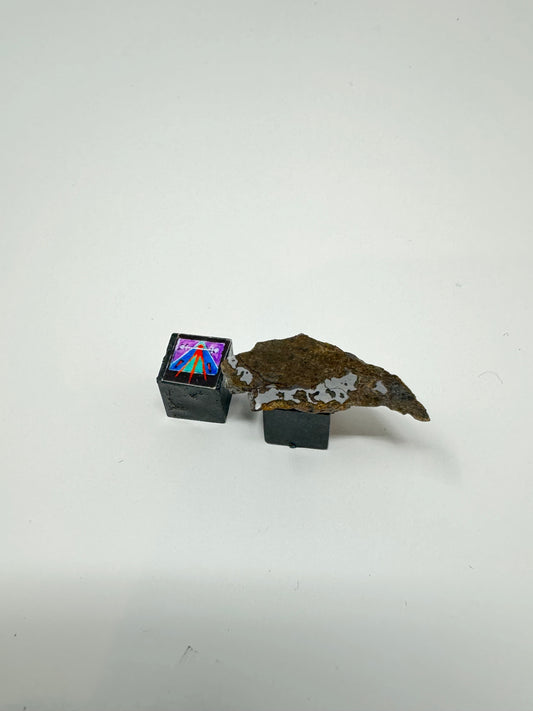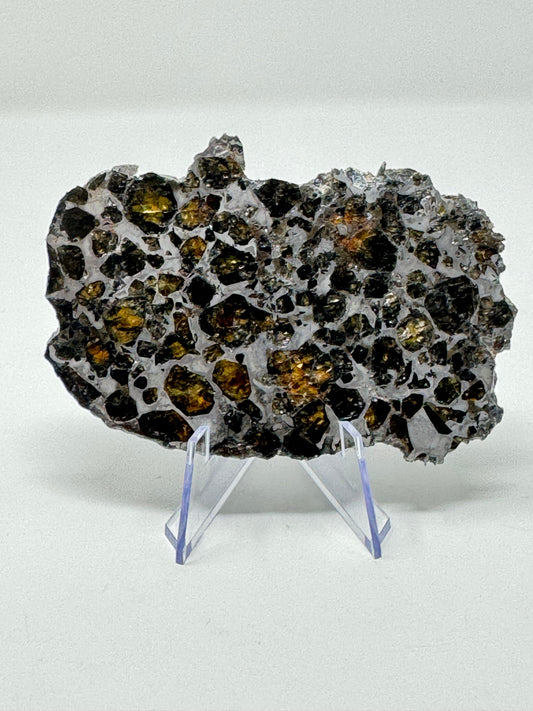Collection: Stony-Iron Meteorites (Parent Body: Core/Mantle Boundary of Asteroids)

Stony-iron meteorites are the rarest and most visually striking of the three main categories of meteorites. They are composed of roughly equal parts iron-nickel metal and silicate minerals, including gemstones like olivine. This unique mixture reflects their origin from the boundary zones between a planet or asteroid's core and mantle.
Within this category, there are two main types:
Pallasites: These meteorites feature large, gem-quality olivine crystals embedded within a metallic iron-nickel matrix. Their striking appearance makes them highly prized among collectors. Pallasites are believed to originate from the core-mantle boundary of differentiated planetary bodies, providing valuable clues about the internal structure of such bodies.
Mesosiderites: These are breccias—rocks made of broken, fused fragments—containing a mixture of metal and silicate materials. They are thought to form from impact processes that cause different layers of a planetary body to mix together, offering insights into the impact history and interior composition of asteroids and other planetary bodies.
Studying stony-iron meteorites helps scientists understand the processes of planetary differentiation, the internal structure of asteroids, and the history of impacts in our solar system.
-
Seymchan Pallasite Meteorite - Nickel/Iron Boundary - From An Asteroid - 24.9g
Regular price $425.00 USDRegular priceUnit price / per -
Beautifully Translucent Seymchan Pallasite Meteorite - 26.5g - From An Asteroid
Regular price $658.00 USDRegular priceUnit price / per -
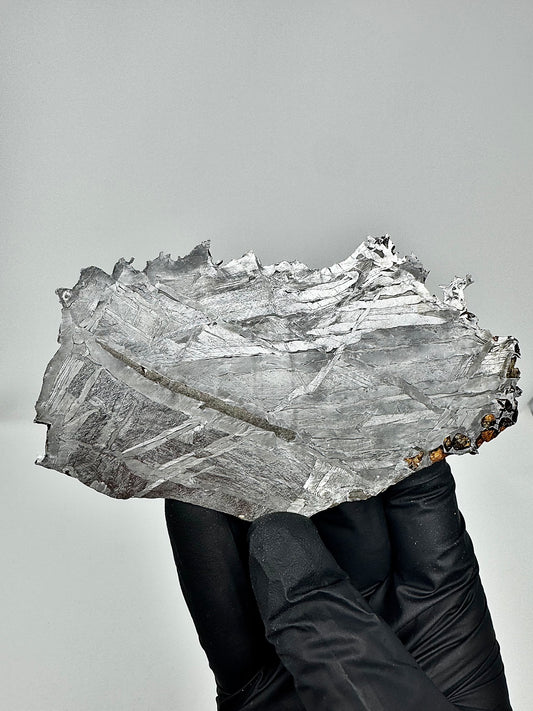
Seymchan Pallasite Meteorite - 41.3g - Full Slice With Crystal Boundary Line - From An Asteroid
Regular price $1,025.00 USDRegular priceUnit price / per -
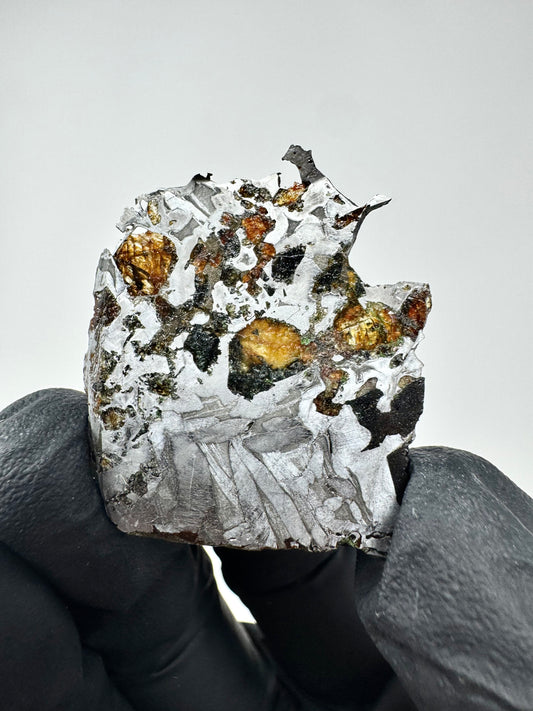 Sold out
Sold outSeymchan Pallasite Meteorite - 7.0g
Regular price $180.00 USDRegular priceUnit price / per -
Seymchan Pallasite Meteorite - Huge Olivine Section! 5.6g
Regular price $175.00 USDRegular priceUnit price / per -
Brahin Pallasite Meteorite - 45.8g - From The Mantle/Core Of An Asteroid - Thick Cut - Very Little Translucency
Regular price $320.00 USDRegular priceUnit price / per -
MAIN MASS! 462.7 El Milhas 005 Mesosiderite Meteorite End Cut - The Estherville Lookalike!
Regular price $3,695.00 USDRegular priceUnit price / per -
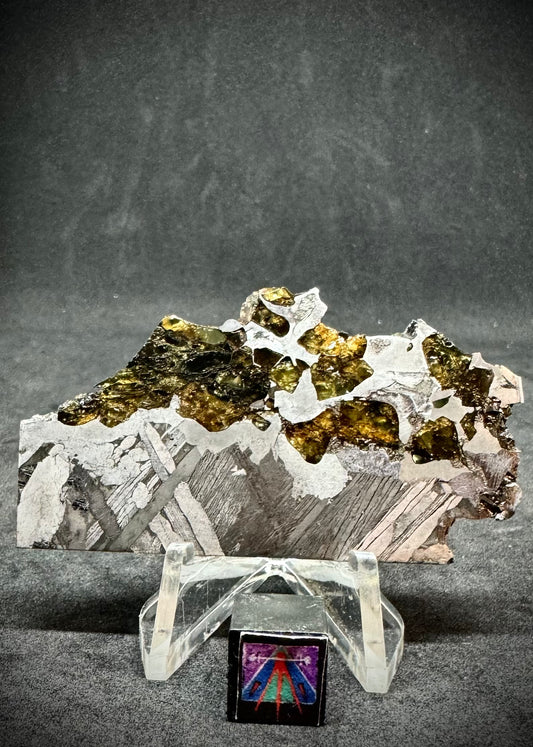 Sold out
Sold outSeymchan Pallasite Meteorite - 23.9g
Regular price $480.00 USDRegular priceUnit price / per -
Seymchan Pallasite Meteorite - 1,474.18g - HUGE, Full Slice End Cut!
Regular price $7,380.00 USDRegular priceUnit price / per -
El Milhas 005 Mesosiderite Meteorite - Estherville Lookalike! 2.6g
Regular price $58.00 USDRegular priceUnit price / per -
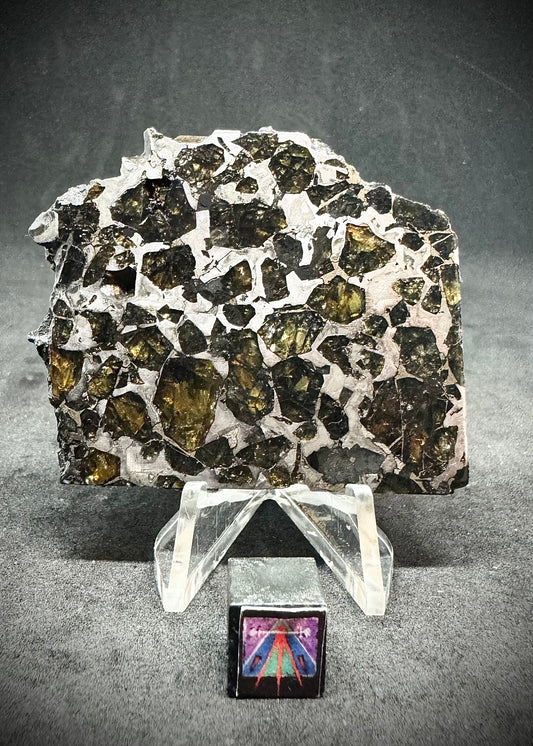 Sold out
Sold outBrahin Pallasite Meteorite - 35.2g
Regular price $415.00 USDRegular priceUnit price / per -
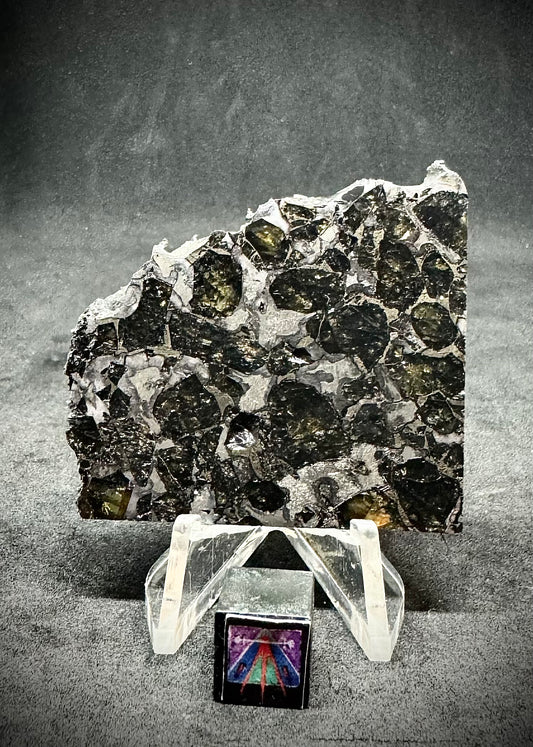 Sold out
Sold outBrahin Pallasite Meteorite - 25.5g
Regular price $305.00 USDRegular priceUnit price / per -
Brahin Pallasite Meteorite - Full Slice - 64.6g
Regular price $815.00 USDRegular priceUnit price / per -
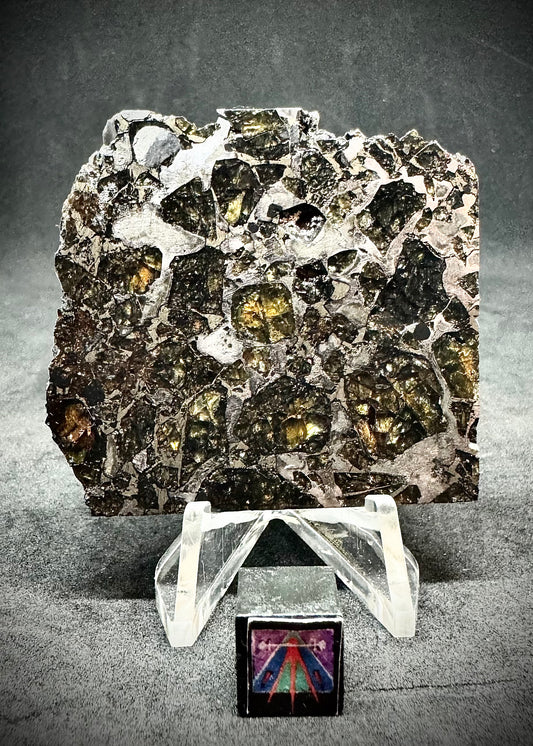 Sold out
Sold outBrahin Pallasite Meteorite - 32.8g
Regular price $385.00 USDRegular priceUnit price / per -
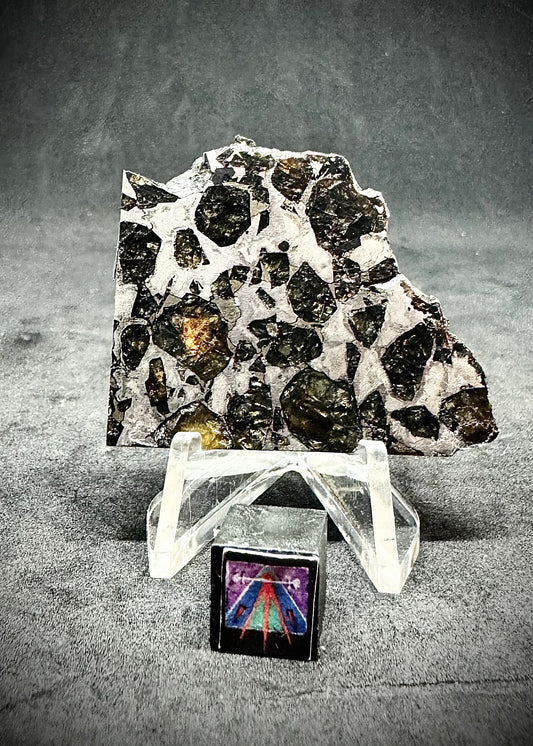 Sold out
Sold outBrahin Pallasite Meteorite - 19.1g
Regular price $342.00 USDRegular priceUnit price / per -
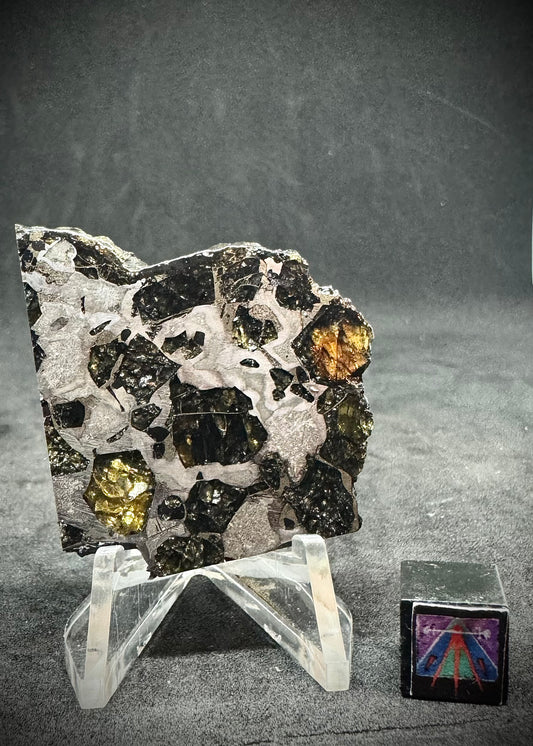 Sold out
Sold outBrahin Pallasite Meteorite - 18.8g
Regular price $342.00 USDRegular priceUnit price / per
